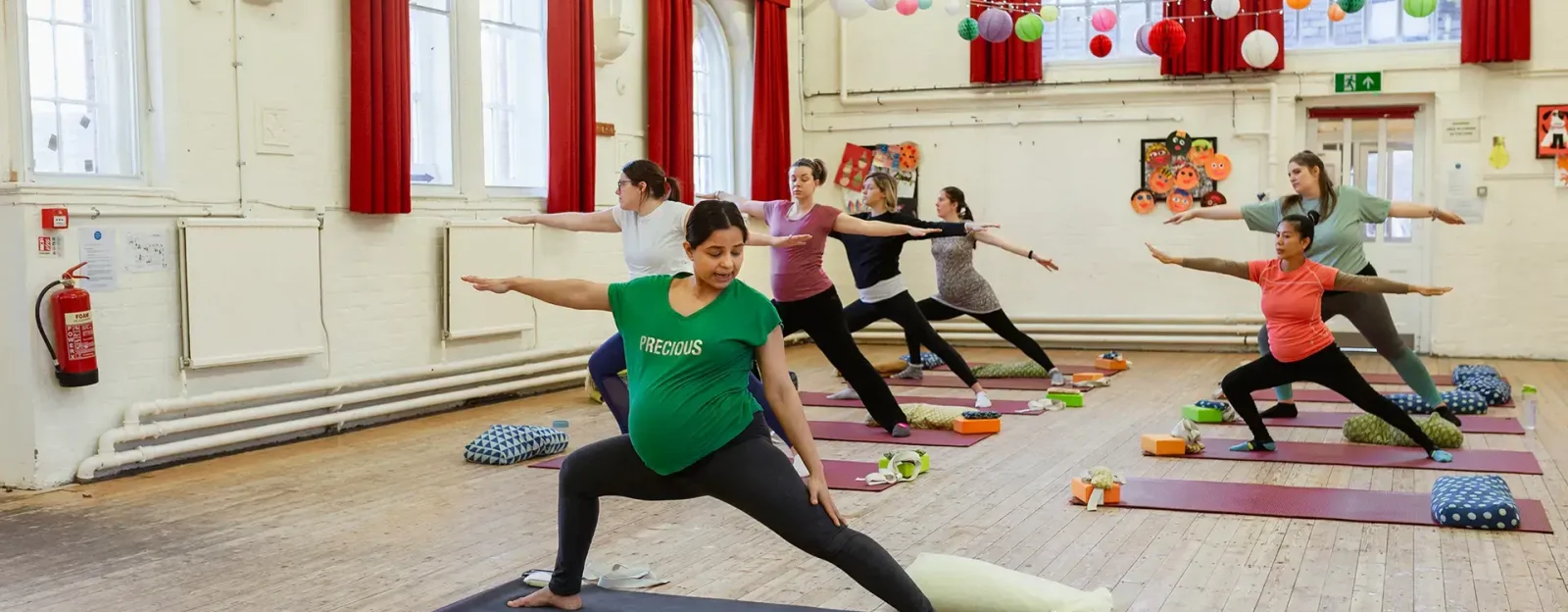Yoga instructor
Also known as; Yoga teacher
The role of the yoga instructor is to engage, facilitate, educate and support clients within yoga classes.
What could I earn as a Yoga instructor?
Your earnings will depend on the hours you work, your location, level of experience and whether you are employed or self-employed. To give you an idea, the data presented reflects the earnings listed in job advertisements across the UK from January to December 2024, as gathered via Lightcast (March 2025). Average annual earnings reflect full-time roles (>32hours/week), however average hourly earnings are a reflection of data collected from full-time, part-time and flexible hours vacancies.
Average UK earnings
Avg. annual earnings
Avg. hourly earnings
total job postings
- Weekdays
- Evenings
- Weekends
- Bank Holidays
58% of yoga Instructor job adverts are hiring for part time positions.

What does a Yoga instructor do?
Yoga instructors are trained professionals specialise in teaching participants a version of yoga, a group of practices originating from ancient India. Modern yoga practice in the UK is a posture-based form of physical fitness training that also offers stress relief and relaxation. Instructors are expected to have a comprehensive understanding of yoga, including anatomy, physiology and teaching methodologies.
The key responsibilities of a yoga instructor are to design and deliver classes, ensuring that their sessions are designed with the participant at the heart. They also provide support to students and offer modifications to increase inclusivity.
Skills and behaviours
The following common or transferable skills are most frequently asked for by employers in yoga instructor job adverts across the UK:
| Skills and behaviours | % Prevalence in job ads |
|---|---|
| Teaching | 45% |
| Communication | 26% |
| Enthusiasm | 17% |
| Constructive feedback | 16% |
| Customer service | 11% |
| Time management | 9% |
| Teamwork | 9% |
| Interpersonal communications | 7% |
| Coaching | 6% |
| Professionalism | 5% |
To find out more about the minimum knowledge, skills and behaviours an individual must understand and demonstrate to become a yoga instructor, you can visit our professional standards library.
How to become a Yoga instructor
To become a yoga instructor, you need to complete a Level 3 qualification in teaching yoga such as a:
- Level 3 Diploma in Teaching Yoga
- Level 3 Award in the Foundations of Yoga
Once you have qualified as a Level 3 Yoga Practitioner, you can also choose to progress onto a Level 4 Teaching Yoga qualification which offers a step up from Level 3, giving greater coverage of applied anatomy and physiology.
Course entry requirements, delivery and cost
There are no formal entry requirements for the Level 3 course, although you do have to be at least 16 years of age. This course can be delivered in an online, in-person or hybrid (online and in person) format, and the total course cost, study time and guided learning hours will vary depending on the delivery format, qualification and training provider you choose.
Professional Standards
CIMSPA is the guardian of a single professional and apprenticeship standards framework for the sport and physical activity sector – outlining the minimum knowledge, skills and behaviours an individual must understand and demonstrate for every occupation and job role in the sector.
This standards framework is driving the development of quality education products for our workforce and supporting employers in assessing which job roles an individual is qualified for.
What's the best role for you?
Check out the Training Accademy
Career paths and progression
Career pathways
Side Steps
Next Steps
Aspirational Steps
Career progression
As well as exploring new career pathways, as a yoga instructor, you can also choose to progress your career by completing further training or continued professional development (CPD) in your role. This training can be added to enable yoga instructors to show their expertise in additional populations, in different environments and with technical specialisms.
Examples of specialisms that may be added are:
- Working with antenatal and postnatal clients
- Working with people with long-term conditions
- Working with inactive people
Find a job as a Yoga instructor
The content of the job posts displayed on the CIMSPA jobs board are pulled in through feeds from websites which are not under the control of CIMSPA.
CIMSPA will not be liable for any false, inaccurate, inappropriate or incomplete information presented on the jobs board.